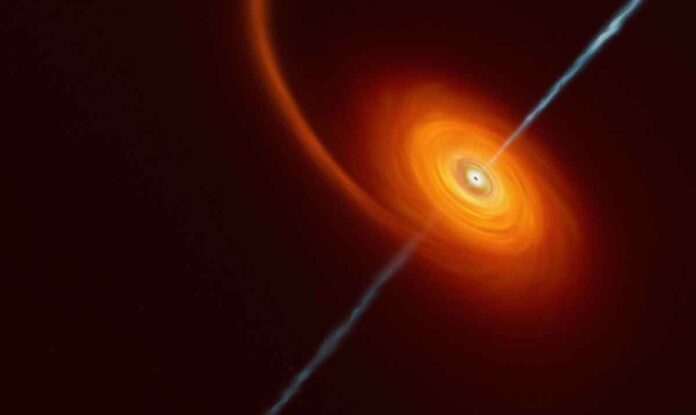A massive black hole millions or billions of times heavier than the Sun, lurks at the heart of nearly every galaxy. Some are known as quasars or active galactic nuclei. They shine brightly from all over the universe as they consume surrounding gas indefinitely. Most are dormant, lurking in the shadows for thousands of years. Until a star passes too close and rips them to shreds. This causes a months-long tidal disruption event (TDE) with the brightness of a supernova.
Until recently, astronomers had only discovered a few TDEs. A new generation of wide-field surveys is catching more of them shortly after they begin. It is yielding new insights into the violent events and the hidden population of black holes that drives them.
Gezari presented an analysis of 39 TDEs earlier this month at the annual meeting of the American Astronomical Society in Honolulu. 22 from recent years and 17 detected in the first 18 months of operation of the Zwicky Transient Facility (ZTF). ZTF is a 1.2-meter survey telescope in California.
The gravity of the black hole shreds an approaching star into strands like spaghetti in the standard TDE picture. The black hole consumes half of the star’s matter immediately. While the rest arcs away in long streamers. These quickly fall back and settle into an accretion disc. It steadily feeds material into the black hole and became so hot that it emits copious amounts of x-rays.
The first TDEs were discovered in the 1990s by an x-ray mapping satellite. Optical surveys, like ZTF, are now picking up on the rapidly changing events and capturing telltale details of the visible glow. They are also alerting other observatories, such as NASA’s Swift telescope, to conduct additional ultraviolet and x-ray observations.
The fingerprints of certain gases in the visible light spectrum can reveal what kind of star fell into the black hole’s maw. Gezari and her colleagues discovered that the TDE spectra fell into three categories, with hydrogen, helium, or a mixture of gases dominating. Hydrogen events most likely indicate large, young stars. Whereas helium events may indicate the cores of older stars whose hydrogen shells have been stripped away. It is possibly by an earlier brush with the black hole. She claims that the proportions reveal information about star populations at the very centres of galaxies. It is at distances from Earth that would otherwise be impossible to investigate.
If astronomers could convert light into a measurement of how quickly material is sucked in, they might be able to calculate a black hole’s mass. It is currently estimated crudely by measuring the size of its galaxy. Tsvi Piran of the Hebrew University of Jerusalem says, “we need to understand the astrophysics of the process with greater clarity.” Astronomers have been able to compare the rise and fall of the visible glow with x-ray measurements taken from space for a few TDEs. But the two don’t match. X-rays frequently flare irregularly or are completely absent.
According to Kate Alexander of the Harvard-Smithsonian Center for Astrophysics, the x-rays could be steady. But it was obscured by a cloud of gas hundreds of times larger than the black hole that forms from a backlog of material. “It’s as if the black hole gets indigestion from eating too much too quickly.” Piran believes that the x-rays are produced in bursts as clumps of matter fall into the black hole. Astronomers aren’t ready to deduce the mass of a black hole from the brilliance of a TDE.
According to theory, black holes can become too massive to cause TDEs. Black holes with masses greater than 100 million suns should swallow stars whole rather than tearing them apart as they approach. All of the increasing number of TDEs have come from smaller galaxies. It imply that the limit is real.
TDEs may even provide insight into a more elusive black hole feature that is its spin. The soft x-ray emissions of three TDEs that pulse in semiregular beats were studied by Dheeraj Pasham of the Massachusetts Institute of Technology. He claims to have observed similar, higher frequency beats coming from smaller, stellar-mass black holes. He believes the pulsing reflects the black hole’s spin.
Constraints on this property could help solve an enduring mystery. Giant black holes form by slowly accreting stellar matter over their lifetime results in a fast spin. Or by merging with giant black holes from other galactic cores, resulting in a slower spin. An x-ray examination of many TDEs could reveal which process is dominant.
Researchers are hopeful that the events will answer more questions as the number of captured TDEs grows rapidly. Also, hundreds or even thousands of discoveries per year are expected from new surveys.

